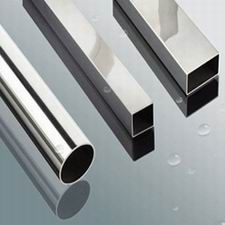- EN 441 stainless steel flat bar Hot rolled / cold drawn
- STS304L stainless steel round bar
- Stainless Steel Hot Rolled Flat Bar
- ISO Stainless Steel Angle Bar
- straight cut stainless steel wire sus304
- 304 bright soft annealed stainless steel wire
- 304L bright soft annealed stainless steel wire
- Stainless Steel Wire
- AISI316 stainless steel round pipe/tube
- 300 Series grade stainless steel round pipe
- AISI/SUS stainless steel pipe/tube cold drawn
- ASTM A249 stainless steel round pipe

The difference between 304l stainless steel pipe and 304 stainless steel pipe
Inquiries : 0 - 2023/4/11 15:01:57
When it comes to stainless steel pipes, there are several grades available, including 304 and 304L. While they may sound similar, these two grades have different chemical compositions and properties. In this article, we will explore the differences between 304 and 304L stainless steel pipes to help you make an informed decision about which one to choose for your specific application.
Chemical Composition
The main difference between 304 and 304L stainless steel pipes is their carbon content. 304 stainless steel contains a maximum of 0.08% carbon, while 304L stainless steel has a maximum of 0.03% carbon. The lower carbon content of 304L stainless steel makes it more resistant to sensitization, a process in which the material loses its corrosion resistance due to the formation of chromium carbides at high temperatures.
Corrosion Resistance
Both 304 and 304L stainless steel pipes are highly resistant to corrosion, making them suitable for a wide range of applications. They are resistant to many chemicals, including acidic and alkaline solutions, as well as to atmospheric corrosion. However, 304L stainless steel is more resistant to sensitization than 304 stainless steel, making it a better choice for applications that involve exposure to high temperatures.
Weldability
304 and 304L stainless steel pipes are both easily weldable using all standard welding techniques. However, due to the lower carbon content in 304L stainless steel, it is less susceptible to welding-related sensitization. This means that 304L stainless steel is less likely to lose its corrosion resistance due to welding, making it a better choice for applications that require welding.

Applications
304 stainless steel pipes are commonly used in a variety of applications, including food processing equipment, chemical processing equipment, and medical devices. They are also used in architectural applications, such as handrails and balustrades. 304L stainless steel pipes, on the other hand, are often used in high-temperature applications, such as in the petrochemical industry, due to their superior resistance to sensitization.
Conclusion
In summary, the main difference between 304 and 304L stainless steel pipes is their carbon content. 304L stainless steel has a lower carbon content, which makes it more resistant to sensitization and better suited for high-temperature applications. Both grades of stainless steel pipes are highly resistant to corrosion and are easily weldable. When choosing between 304 and 304L stainless steel pipes, it is important to consider the specific application and the potential for sensitization or welding-related issues.

